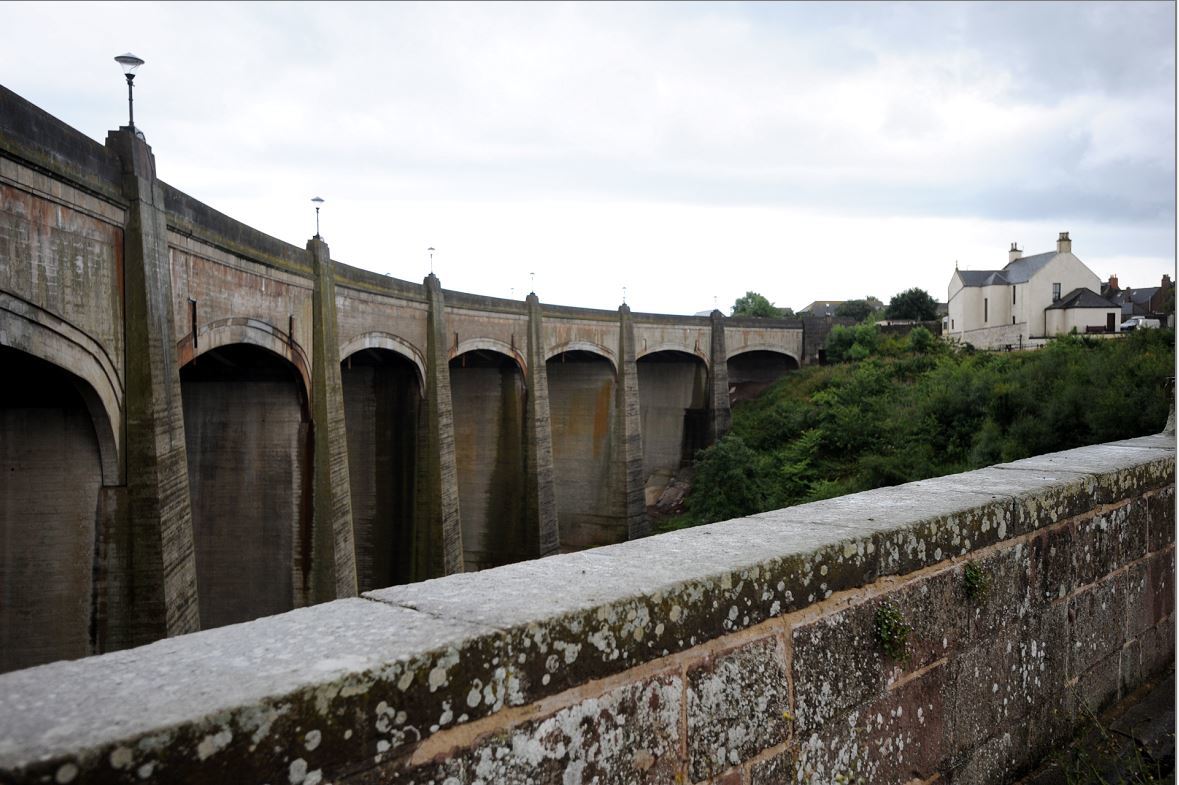A unique seven-arched “curving bridge” built in Kincardineshire in the silver jubilee year of Queen Victoria’s grandson King George V has “daylight” showing its cracks, councillors have been warned.
The Jubilee Bridge, which carries the A92 northwards out of town in Inverbervie, will be subjected to a full survey after members of the Kincardine and Mearns area committee were warned that its walls might give way if hit by a vehicle head-one.
The bridge, over the Bervie Water, was built in 1935, replacing a single-span bridge built in 1799.
Officials from Aberdeenshire Council, which is responsible for the structure, say they do not believe the actual integrity of the parapets has been affected, but are uncertain about the possible effects of a head-on impact with the stonework.
Bridges and structures manager Donald Macpherson said: “There would be a risk if anything hit the parapet. The more square on you hit it the more risk there, is but it is something that we are aware of and work will have to be done to maintain the structural integrity of the parapet.”
He added: “The Jubilee Bridge has a number of unusual factors to it including its size and the fact it is on a radius curve.
“It has complex engineering properties to it and one of those is the contraction and expansion of the bridge, which we believe is linked to the stonework moving.
“Further investigation needs to be done. At the moment it is not affecting the structural strength of the parapets.”
Local councillor George Carr, who raised the issue, said: “The brickwork is lacking mortar. If you drive across it you can see daylight.
“I just question how fit for purpose it is. Every winter the brickwork is moving and you are seeing dislocation, and there have been a couple of accidents on it.”
Meanwhile, the council is to spend POUNDS 30,000 repointing the disused Den of Finella viaduct, a recognised beauty spot, built near near Laurencekirk, Kincardineshire, in 1780.
Scaffolding is thought to be too expensive for the job, so the work will be carried out by steeplejacks using roped access.
